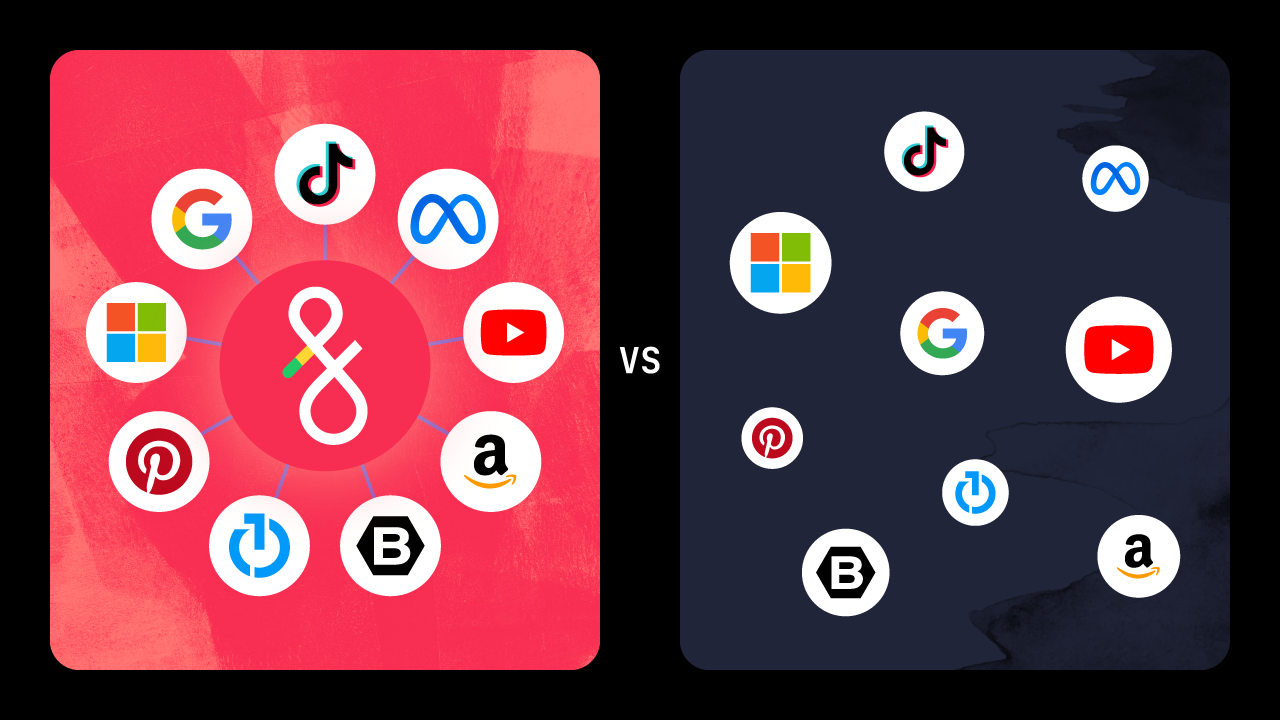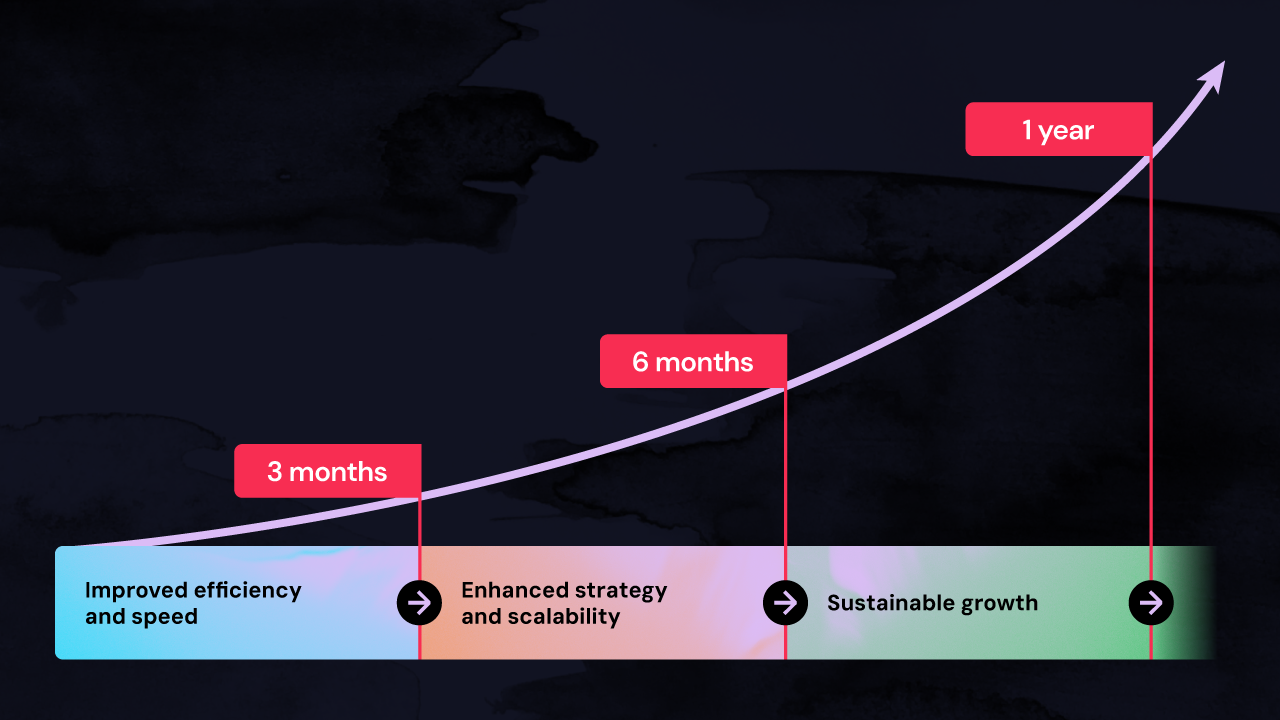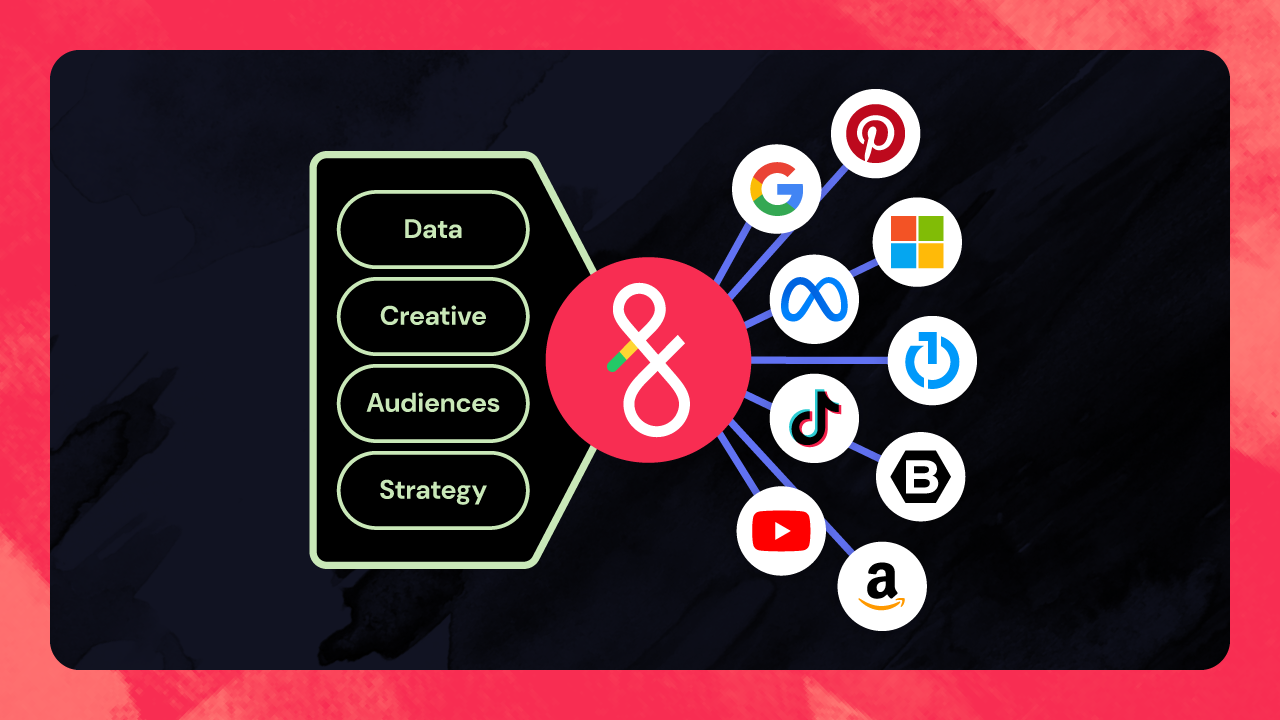There’s a lot of confusion in digital advertising around whether automation and AI are one and the same. Many people tend to assume that these two tools serve the same purpose or function in similar ways.
However, each of these technologies plays a distinct role in digital advertising—and you need both to work together to achieve scalable success.
Below are four critical concepts that can help you shape your AI and automation approaches. To go deeper, check out our insightful takeaways from a recent AW360 podcast episode discussing the "fact and fiction" of AI and automation in digital advertising.
1. Automation can be a workflow solution, not isolated to specific processes
Automation can sound like some mysterious, high-tech solution, but it really isn't. Instead, automation enables you to mechanize obvious things that you do on a daily basis instead of sitting there clicking buttons and typing things in.
Some automation use cases seem straightforward because they’ve existed in the digital marketing space since the beginning. For example, automated bidding strategies are so ingrained in the digital advertising workstream that it’s easy to forget this is considered “automation.”
As an industry, digital advertising is in a new era of automation opportunities. Automation has evolved far beyond individual campaign use cases. It now needs to fuel your business processes.
"If you can actually articulate it and say, 'This is how we address that problem,' then you can absolutely automate it,” said Eric Mayhew, Chief Product Officer, President, and Co-Founder at Fluency, on a podcast with AW360.
Automation can be used throughout the ad operations process. You can use automation to update ad copy for short-term specials and deals, optimize targeting, or correct budget pacing throughout the month so you don’t underspend (or overspend).
It’s also important to note that automation doesn’t need to operate in a silo for isolated tasks. When implemented holistically, you can align the different parts of your advertising ecosystem using automation. Using automation in this way enables you to implement different strategies at scale.
2. Use "Why can't we just?" as a catalyst for automation
Determining the best processes for automation can be difficult when you’re first dipping your toe in. Mayhew suggests starting with one simple phrase: “Why can’t we just?”
"When you hear that, ‘why can't we just?’ It is the spark for anything that you want to automate after that," said Mayhew.
Asking your teams (or yourself!) this question highlights the common frustrations within your advertising workflows that lead to automation opportunities. In asking this question, you’re encouraging a mindset that seeks practical solutions to repetitive tasks. Where there are repetitive tasks, there’s an opportunity for automation to thrive.
Identifying these "why can't we just" moments within your own workflows can reveal areas ripe for automation.
3. AI is supporting more strategic and creative work
GenAI is still expanding its role in digital advertising. Mayhew sees AI as adding value to automation by giving outputs a more humanistic touch that feels less robotic.
"AI really does augment the automation story,” Mayhew said. “If you really wanna get a human voice, AI is extremely good at that."
Once you’ve shaped the narrative or creative strategy, AI can generate infinite ad copy iterations within specific character counts for different channels or usages. You may also use AI to iterate new ideas from your core strategy, bringing fresh ideas that you can incorporate into testing or optimizations.
At its core, AI’s strength is in summarizing data and providing a human voice. This can help your brand feel personable while freeing up massive amounts of time for your team. The time you would spend writing dozens of messaging variations can now go toward high-value tasks, optimizations, or strategic actions.
4. Maximize AI’s benefits by using automation to mitigate risk
Data use rights and privacy are major concerns for advertisers, especially if you’re using AI in your production workflows. Pairing automation with AI can help make AI usage safer and less risky.
Before you dive into using AI, make sure your organization has a clear understanding of AI’s limitations. Set clear governance regarding AI usage at your company, including best practices. Once established, automation rules can help ensure that your AI policies are adhered to across the organization—even if the policies differ by account.
For example, you can build automated review and control workflows around AI outputs can ensure that nothing questionable goes live. This could include setting up automation rules that avoid certain terms or phrases from AI outputs for specific clients.
Automation also enables you to set boundaries around outputs to ensure brand or legal compliance. This helps guarantee that AI doesn’t generate something that puts your company at risk.
"I'm controlling what I put into the AI,” said Mayhew. “I can be deterministic and know for sure that I'm covering the basis of what my rules are."
You can even bring automation one level before your AI processes. Automation can aid in data normalization and cleaning, ensuring AI is using the best possible data in its work. Using automation in this way helps you scale normalized data usage across a wide array of operational workflows: performance, optimization, reporting, and even budgeting.
Tune in now for more insights
Want to dig deeper into AI and automation in digital advertising? Hear the full conversation between Eric Mayhew and AW360 host Richard Larsson on the AW360 podcast.

.avif)




